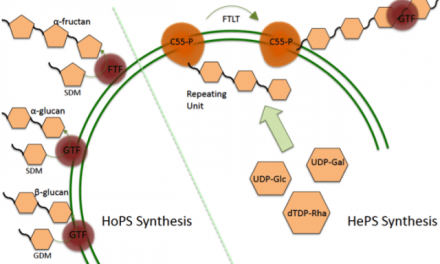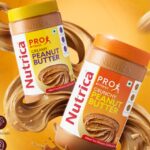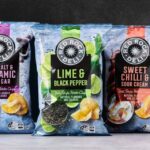Food colours serve as a vital marketing tool to ensure that the product has consistent consumer appeal. Food colours are used to restore the appearance of a food/drink after processing and also to help to maintain the particular shade of a product, explain DN Yadav, GK Sharma and AS Bawa.
Table of content:
Food Colours – Why Do We Need Them?
Food colours serve as a vital marketing tool to ensure that the product maintains a consistent consumer appeal and are also important in supporting flavour association. Food colours, whether natural food colours or synthetic food colours, are therefore used by manufacturers to restore the appearance of a food/drink after processing and also to help to maintain the particular shade of a product for the duration of its shelf life. For the manufacturers, it is a delicate balance to provide vibrant, appealing colours that do not look either artificial or too dull, as consumers and retailers are not prepared to compromise the visual appearance of their food and beverage, especially in the age of clean label food additives and non-toxic food dyes.
Natural vs. Synthetic Food Colours: Evolution and Usage
Food colours can loosely be categorized as artificial food colours (colours that have been chemically synthesized) or natural food colours. Historically, the use of food colours centred on synthetic ones. However, as technology has evolved, a revolution in the availability of plant-based colourants has taken place, offering equal stability to their synthetic counterparts in a wide range of applications. Natural food colouring agents have always been part of the diet.
They have been isolated and added back to foods for the same reasons as the synthetic / certified colours. Chlorophyllls, carotenoids and anthocyanins are consumed in the foods through our diet. Common natural colourings include annatto, saffron, paprika, grapes skin, caramel, beetroot, cochineal and turmeric. According to PFA (2007), the following natural colour principles whether isolated from natural or produced synthetically may be used in or upon any article of food.
They have been isolated and added back to foods for the same reasons as the synthetic/certified food colours. Chlorophylls, carotenoids, and anthocyanins are consumed in the foods through our diet. Common natural colourings include annatto, saffron, paprika, grape skin, caramel, beetroot, cochineal, and turmeric. These organic food colouring trends are gaining ground with the rise in demand for eco-friendly food dyes. As per the regulations, the following natural colour principles, whether isolated from natural or produced synthetically, may be used in or upon any article of food.
- Beta-carotene
- Beta-apo-8` carotenal
- Methyl ester of beta-apo-β carotenoic acid
- Ethyl ester of beta-apo-β carotenoic acid
- Canthaxanthin chlorophyll
- Ribiflavin (lactoflavin)
- Caramel
- Annatto
- Saffron
- Curcumin (turmeric)
Natural food colours, which have low tinctorial strength, need to be used at higher levels than their synthetic counterparts. As a consequence, they may unexpectedly change the texture, odour or flavour of the food. They are less stable and less consistent, causing the food, at times, to be unacceptable to the consumer. Natural vs synthetic food additives also differ in terms of performance, as natural ones are often more dull, more pastel and more easily affected by the food matrix, pH, salt, vitamins, flavour and other factors. They are also more likely to be contaminated with undesirable trace metals, insecticides, herbicides, and bacteria.
“Natural” colour additives are generally considered colour additives derived from plant or animal sources by extraction or other physical processing. The natural and synthetic colour additives are subject to the same safety standards under the regulatory scheme in the US Food, Drug and Cosmetic Act. The US Food and Drug Administration (FDA) (Hallagan et al, 1995) regulate these in two classes. In general, the synthetic colour additives are subjected to a certification requirements to assure that each batch of material manufactured meets the standard specifications while the natural colour are “exempt” from certification and may be manufactured and marketed without certification of FDA.
Natural colour additives are generally considered food colour additives derived from plant or animal sources by extraction or other physical processing. The natural and synthetic colour additives are subject to the same safety standards under the regulatory scheme in the US Food, Drug and Cosmetic Act. The US Food and Drug Administration (FDA) regulates these in two classes (Hallagan et al., 1995). In general, the FDA approved synthetic food dyes are subjected to certification requirements to ensure that each batch of material manufactured meets the standard specifications. At the same time, natural colourants are “exempt” from certification and may be manufactured and marketed without FDA certification.
Also Read: Top Food Colour Manufacturers and Companies
Labeling Requirements for Food Products with Colour Additives
Foods containing synthetic (certified) colour additives must explicitly declare the presence of these additives in the ingredients statement individually. According to the Food Safety and Standards Authority of India (FSSAI) guidelines, this requirement ensures food label transparency and informs consumers about the specific synthetic colours used in the product.
In contrast, natural colour additives can be declared more generically. The FSSAI permits phrases such as “artificially coloured” or “colour added” to denote the presence of natural food colours without necessitating a specific declaration. This approach has raised concerns among some consumer advocacy groups, who argue that the exemption for natural food colouring agents from detailed labeling may pose risks, particularly regarding potential adverse reactions in individuals with sensitive health conditions.
Safety Considerations of Food Colours
Safety considerations regarding food colours are critical due to their widespread use in the food industry and their potential health implications. The following overview highlights key safety aspects of synthetic and natural food colour additives.
Regulatory Oversight
Food colour additives are subject to strict regulations in many countries, including the United States and the European Union. Regulatory bodies such as the U.S. Food and Drug Administration (FDA) and the European Food Safety Authority (EFSA) evaluate the safety of these additives before they can be used in food products. This evaluation includes assessing the substances’ chemical composition, potential toxicity, and long-term health effects in line with current food colour safety standards.
Health Concerns
Allergic Reactions: Certain synthetic food colours, such as Yellow 5 and Red 40, have been linked to allergic reactions in sensitive individuals. Symptoms can include hives, asthma, and other respiratory issues. Consumers are advised to read labels carefully to avoid these additives if they have known sensitivities.
Hyperactivity: There is ongoing debate regarding the impact of artificial food colours on children’s behavior. Some studies suggest a possible link between consuming certain synthetic dyes and increased hyperactivity or behavioral issues in children, prompting some parents to choose products without these additives to reduce hyperactivity and food dyes exposure.
Potential Carcinogenicity: Concerns about certain synthetic food dyes having genotoxic or carcinogenic properties have been raised. Although regulatory agencies deem many colour additives safe for consumption, there is a growing trend toward replacing synthetic dyes with natural alternatives due to these concerns related to carcinogenic food colours.
Natural vs. Synthetic Food Colours
Although natural food colors are typically regarded as safer due to their plant-based origins and potential nutritional benefits—such as antioxidant properties from compounds like chlorophyll, carotenoids, and anthocyanins—they are not entirely risk-free. Natural colorants can still provoke allergic reactions or other adverse effects in susceptible individuals.
In contrast, synthetic food colors are produced through chemical synthesis, offering advantages such as brighter hues, greater stability, and lower costs, which make them appealing to manufacturers. However, synthetic dyes have been linked in various studies to potential health concerns, including hyperactivity and allergic responses.
Therefore, manufacturers need to ensure that all food colour additives, whether synthetic or natural, are adequately tested for safety.
Conclusion
The safety of food colours remains a complex issue influenced by regulatory standards, consumer awareness, and ongoing research into health effects. As consumers become more health-conscious and informed about food additives, there is an increasing demand for transparency in labeling and a shift toward safer, natural alternatives. Continuous monitoring and robust testing methods are necessary to ensure food products remain safe for consumption while meeting aesthetic expectations.
Natural vs Synthetic Food Colours: FAQs
Food colour additives are substances used to enhance or restore the colour of food and beverages. They improve visual appeal, support flavour perception, and ensure consistent appearance during shelf life.
Natural food colours are derived from plant or animal sources, such as beetroot, turmeric, or saffron. Synthetic food colours are chemically manufactured and offer more stability and vibrant hues but may raise health concerns.
Natural food colours are generally perceived as safer due to their plant-based origin. However, they can still cause allergic reactions or be affected by contaminants. Both types must meet safety standards set by regulatory bodies like the FDA or FSSAI.
Some studies suggest a potential link between synthetic food dyes (e.g., Red 40, Yellow 5) and hyperactivity in children. As a result, many parents prefer products with natural colouring agents.
Yes, synthetic food colours are regulated and approved by agencies such as the U.S. FDA and India’s FSSAI. They must undergo strict certification to meet safety and quality standards.
Synthetic food colours must be listed individually in the ingredient list. Natural colours may be labeled more generally with terms like “colour added” or “artificially coloured,” depending on regional regulations.
Popular natural colourants include beetroot, turmeric, saffron, annatto, paprika, grape skin extract, and chlorophyll. These are widely used in beverages, snacks, and bakery products.
With rising health awareness and preference for clean-label products, consumers increasingly seek natural food colours due to perceived safety and environmental benefits.
‘Processed Food Industry’: The Voice of Food Processing Industry
Processed Food Industry (PFI) is a premier English-language monthly B2B publication (ISSN 09721649) headquartered in New Delhi, catering to the vibrant and ever-evolving food processing industry. While we don’t claim to be the largest or most widely read, our proud legacy of over 27 years—publishing continuously since 1997—has earned us the trust of industry professionals as a reliable source of insights and information.
If your goal is to tap into the booming Indian and South Asian markets to promote your equipment, technology, software, or consumables, PFI is your strategic partner. With our hybrid approach across print, web, and social media, we help you establish strong brand recognition rooted in market relevance. Backed by a team of top-tier technical writers, we’re ready to work closely with you and your customers to craft compelling content that drives results.
India and South Asia’s food industry is expanding rapidly, driven by efficiency and cutting-edge innovations. Don’t miss the opportunity to elevate your brand and engage with this dynamic market. Get our 2025 media kit to fine-tune your marketing strategy, increase your visibility, and convert potential customers into valuable conversations. Additionally, ask for a sample copy of our monthly magazine and experience the quality and relevance we deliver.
Let us help you define your role in the future of the food processing industry.

Have a news or topic to share with industry? Write to us editorial@pfionline.com
















